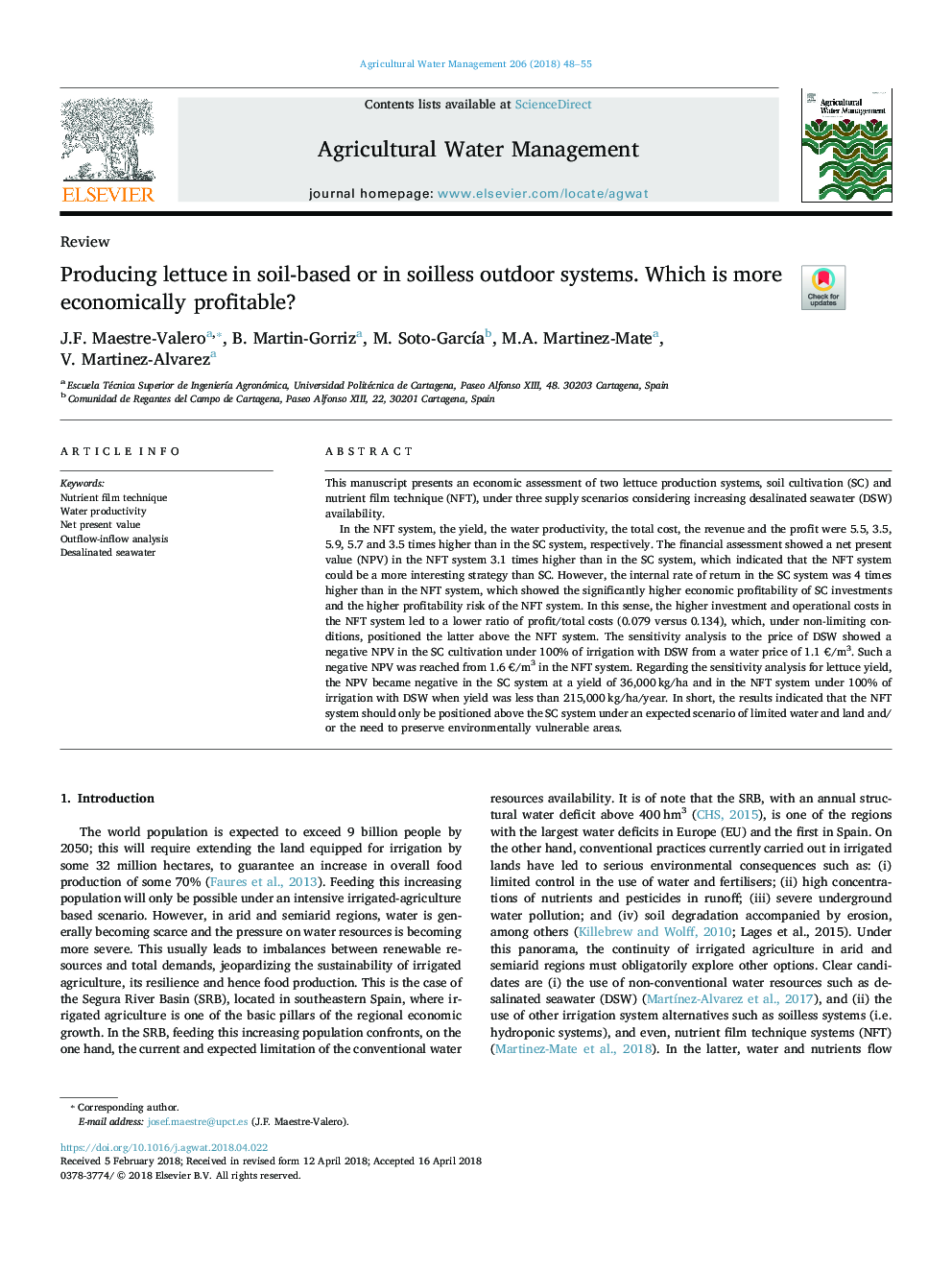| Article ID | Journal | Published Year | Pages | File Type |
|---|---|---|---|---|
| 8872839 | Agricultural Water Management | 2018 | 8 Pages |
Abstract
In the NFT system, the yield, the water productivity, the total cost, the revenue and the profit were 5.5, 3.5, 5.9, 5.7 and 3.5 times higher than in the SC system, respectively. The financial assessment showed a net present value (NPV) in the NFT system 3.1 times higher than in the SC system, which indicated that the NFT system could be a more interesting strategy than SC. However, the internal rate of return in the SC system was 4 times higher than in the NFT system, which showed the significantly higher economic profitability of SC investments and the higher profitability risk of the NFT system. In this sense, the higher investment and operational costs in the NFT system led to a lower ratio of profit/total costs (0.079 versus 0.134), which, under non-limiting conditions, positioned the latter above the NFT system. The sensitivity analysis to the price of DSW showed a negative NPV in the SC cultivation under 100% of irrigation with DSW from a water price of 1.1 â¬/m3. Such a negative NPV was reached from 1.6 â¬/m3 in the NFT system. Regarding the sensitivity analysis for lettuce yield, the NPV became negative in the SC system at a yield of 36,000â¯kg/ha and in the NFT system under 100% of irrigation with DSW when yield was less than 215,000â¯kg/ha/year. In short, the results indicated that the NFT system should only be positioned above the SC system under an expected scenario of limited water and land and/or the need to preserve environmentally vulnerable areas.
Related Topics
Life Sciences
Agricultural and Biological Sciences
Agronomy and Crop Science
Authors
J.F. Maestre-Valero, B. Martin-Gorriz, M. Soto-GarcÃa, M.A. Martinez-Mate, V. Martinez-Alvarez,
